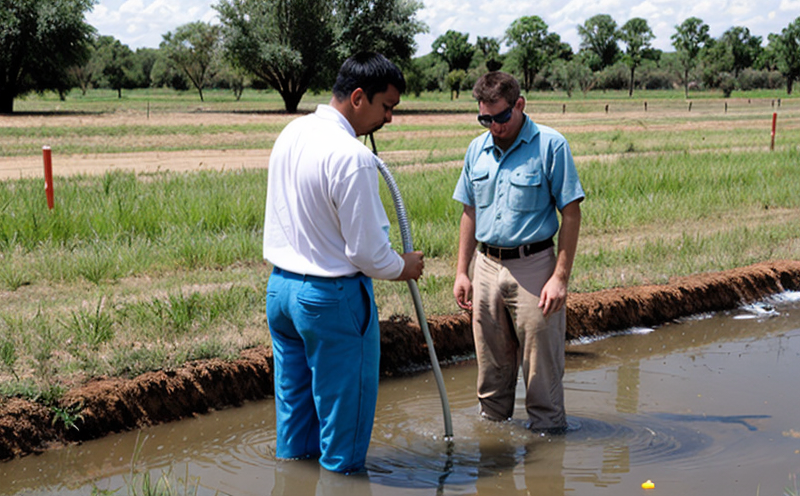ASTM D4750 Determining Subsurface Liquid Levels in a Borehole Test
The ASTM D4750 test method is widely used to determine the subsurface liquid levels within boreholes, which is essential for understanding groundwater and aquifer dynamics. This testing service ensures compliance with environmental regulations and supports research and development efforts in hydrology.
Groundwater plays a crucial role in both natural ecosystems and human activities, including agriculture, drinking water supply, and industrial processes. Accurate measurement of subsurface liquid levels is vital for assessing the health of aquifers and ensuring sustainable use of these resources. ASTM D4750 provides a standardized approach to achieve this goal.
The procedure involves installing a piezometer or other suitable instruments into the borehole, which allows for continuous monitoring of water level changes over time. By following strict protocol outlined in ASTM D4750, laboratories can provide reliable data that helps stakeholders make informed decisions about resource management and environmental protection.
Key steps in conducting an ASTM D4750 test include selecting the appropriate instrument type based on depth of measurement required; ensuring proper installation within the borehole; calibrating equipment accurately before use; performing regular maintenance checks throughout monitoring periods; recording all relevant data points; and generating comprehensive reports summarizing findings.
Compliance with ASTM D4750 is critical for organizations involved in environmental studies, consulting firms specializing in water resources management, government agencies responsible for enforcing environmental laws, and academic institutions conducting research related to hydrogeology. By adhering strictly to this standard practice, these entities can ensure their measurements are consistent across different locations and timeframes.
Real-world applications of ASTM D4750 include monitoring changes in groundwater levels due to climate variability or human activities such as agriculture, mining, or urban development; assessing the effectiveness of remediation projects aimed at restoring contaminated sites back into productive use; evaluating potential sources of contamination that may impact nearby surface waters; and informing policy decisions regarding water allocation among competing users.
- Monitoring long-term trends in groundwater levels to inform climate change adaptation strategies
- Evaluating the impacts of droughts on local aquifer systems
- Assisting in determining appropriate locations for new wells or monitoring existing ones
- Supporting efforts to mitigate risks associated with over-extraction from confined aquifers
Applied Standards
The ASTM D4750 test method is part of a broader suite of standards designed to address various aspects of ground water monitoring. These include:
Industry Applications
The ASTM D4750 test method finds application across numerous industries where reliable measurement of subsurface liquid levels is needed:
- Agriculture: To assess irrigation needs and soil moisture content.
- Environmental Consulting Firms: For evaluating the effectiveness of remediation projects.
- Government Agencies: Enforcing environmental laws related to water resources management.
- Academic Institutions: Conducting research on hydrogeology and groundwater flow patterns.
Eurolab Advantages
EuroLab offers comprehensive expertise in ASTM D4750 testing, ensuring accurate and reliable results every time. Our experienced team of scientists and engineers uses state-of-the-art equipment to conduct these tests according to the highest standards.
We provide detailed reports that summarize our findings, helping clients understand complex data sets and make informed decisions based on scientific evidence. With years of experience in this field, we bring unique insights into groundwater monitoring practices and best practices.
Our commitment to quality control guarantees consistent accuracy across all tests performed by our facility. This dedication ensures that your organization receives dependable results whenever you need them most - whether it's for regulatory compliance or internal decision-making purposes.





